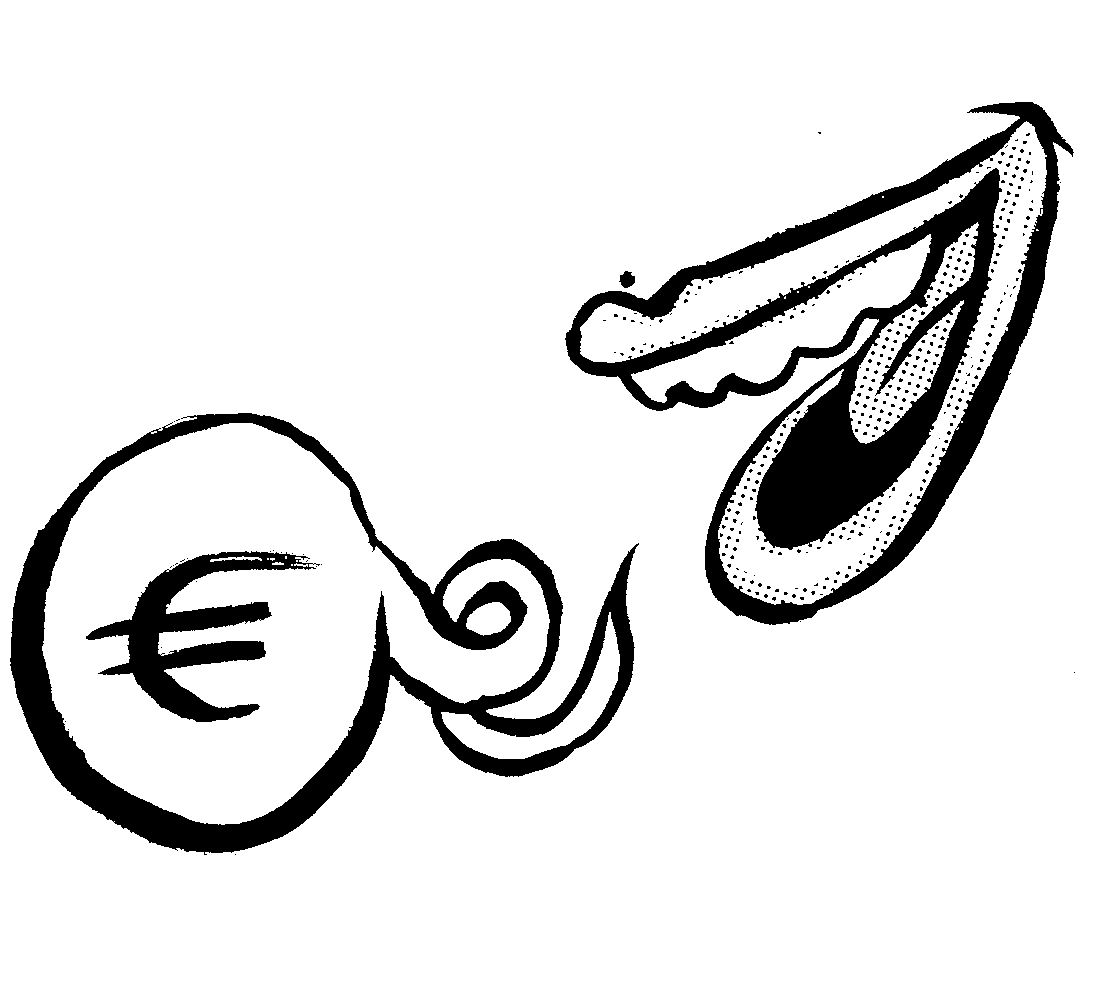Art commissioners

Show that you are a fair commissioner of art!
Artists often earn their livelihoods from multiple sources. Occasional gigs, assignments and invitations to speak are all part of an artist’s work. They are not marketing exercises for their art or voluntary activities alongside their “main work”.
Whether you commission an artist’s professional skills (such as a performance or work of art) or expertise (a talk or article), it all involves work that should be paid for.
Fair commissioners of art never offer artists visibility alone as compensation for their work. Paying fair remuneration demonstrates that you value the work performed by the artist and support a diverse and thriving art sector.
How to commission work from an artist responsibly:
- When planning for a cultural event, for example, budget realistically for the share of the artist’s work right from the start. To help you do so, use recommendations and request offers.
- When offering a work opportunity to an artist, bring up the subject of money immediately or request an offer from the artist.
- Draw up an agreement in writing specifying remuneration and responsibilities.
If recommendations refer to wages, other costs payable by the artist should be taken into consideration, such as VAT, pension insurance, social security and working costs.
Links
To help you commission work from artists, we have included links on this page to pay and fee recommendations for different fields of the arts, as well as agreement templates.
Recommendations are always base prices and indicative. Audiences get to see only a tiny portion of all the artistic work that goes into the finished product. The price should take into account the amount of preparation work, the duration of the performance/presentation, all the props that are required, the number of people involved, the location, the size of the audience, special requirements, and the length and merits of the artist’s professional career.

- Visual arts
- Literature
- Performing arts
- Art for social services and healthcare
- Artists as guest speakers
- Copyright issues
Visual arts
You can purchase a finished work, commission a new work or agree to use an existing work of art from an artist. A work of art is always unique, and its price cannot be compared to consumer products.
When commissioning a work of art, it is customary to make an agreement and pay for a preliminary design in the form of a draft, sketch or model, for example. This involves demanding and time-consuming creative work. Once the preliminary design has been approved, a separate agreement is made for the final version. The agreement should stipulate the artist’s fee and material costs, as well as responsibilities for transportation, installation and other related work, as well as a schedule, for example.
The total price should be sufficient to cover the artist’s working hours, materials, tools, rent, pension and social security contributions, and other necessities of life to be paid for through the artist’s work. The price should also take into consideration the risks involved in creating a unique work of art.
Preparing works for exhibitions and constructing the exhibition itself are all part of an artist’s work and not simply marketing exercises.
An exhibition fee (copyright fee) for displaying the work is paid through the copyright society Kuvasto or directly to the artist.
An exhibition payment is paid as compensation to the artist for preparing the art for the exhibition.
finnish Artists´Association: Guidelines for different types of work for visual artists (In finnish)
Commissioning art for public spaces:
- Guidelines and agreement templates in the “Percent for Art” handbook (in finnish)
- Guidelines for commissioning art in the handbook of the Artists’ Association of Finland (in finnish)
Exhibitios
- Exhibition (copyright) fee pricelist (in finnish)
- Exhibition payment recommendations (Netherlands)
- Exhibition payment recommendations (Sweden)
- Guidelines for graphic design and illustrations:
- Pricing guidelines by Grafia, the Association of Visual Communication Designers in Finland (in finnish)
- Guidelines for purchasing graphic design and illustrations by Grafia (in finnish)
Literature
Although general guidelines do not exist for pricing fictional works commissioned from writers, such as a poem or short story for a specific purpose, the guidelines of the Association of Freelance Journalists in Finland can be applied. In addition, you can refer to statistics compiled by the Union of Finnish Writers regarding fees typically paid to writers. If you are uncertain about a suitable amount, you can request an offer from the author.
For the pricing of articles and editorials, the guidelines of the Association of Freelance Journalists in Finland are applicable.
The Finnish Reading Centre serves as an agency for visits by authors to cultural events, schools and other events. When you order an author visit from the Finnish Reading Centre, the author receives appropriate compensation and the Finnish Reading Centre makes an agreement with the author on your behalf. If you order an author visit independently, you should still refer to the general guidelines of the Finnish Reading Centre.
- Guidelines of the Association of Freelance Journalists (in finnish)
- Statistics compiled by the Union of Finnish Writers regarding fees typically paid to writers (in finnish)
- Guidelines of the Finnish Reading Centre (in finnish)
Performing arts (music, dance, circus, theatre)
When commissioning work from a theatre, dance, music or circus professional, it is important to keep in mind that the duration of the performance does not determine the value of the work input. It is also important to come to an agreement with the artist about the framework conditions for the performance: the space for the performance, safety, technical aspects, audience numbers, the amount of time needed to set up for the performance, and so on. The website of the Trade Union for Theatre and Media Finland (TEME) lists its own recommendations for theatre and media professionals, including dancers, circus artists, directors, sound and light designers, and dramaturges. The Musicians’ Union has its own recommendations for professional musicians. Actors in turn are represented by the Finnish Actors’ Union.
The amount of remuneration should be based on the above recommendations while also taking into consideration the total amount of hours required for planning and rehearsals, the artistic and other work required for the entire production, material expenses, wage-related expenses and so on. Performing arts productions usually require the work input of numerous professionals.
Dance professionals
- Work by dance artists and services related to dance art and cultural wellbeing can be ordered from the Finnish Network of Regional Dance Centres (in finnish)
- Pay recommendations of the Trade Union for Theatre and Media Finland (TEME) for dance professionals (in finnish)
Theatre and Media professionals
- Pay recommendations of the Trade Union for Theatre and Media Finland (TEME) (in finnish)
- TEME pay recommendations for amateur theatres (in finnish)
- TEME recommendations for directors and dramaturges (in finnish)
- TEME recommendations for sound and light designers (in finnish)
- TEME recommendations for stage managers and costume managers (in finnish)
- TEME recommendations for puppet theatres (in finnish)
- TEME recommendations for theatre educators (in finnish)
- TEME agreement templates (in finnish)
Actors
- Pay recommendations of the Finnish Actors’ Union (in finnish)
Musicians
- Musicians’ Union tariff list for concerts in clubs and restaurants (in finnish)
- Musicians’ Union pay list for musicians (in finnish)
- Musicians’ Union tariff list for livestreams and recordings (in finnish)
- Musicians’ Union agreement templates (in finnish)
- Musicians’ Union employment contract templates (in finnish)
Event producers
Artists as guest speakers
Artists have to spend a lot of time preparing for lectures, discussion panels and workshops. At these types of events, artists apply their own knowledge, pedagogical skills and expertise in various methods, for example.
If the assignment requires expertise in more than one subject, it should be reflected in the level of remuneration.
Artists are usually highly educated experts in their chosen field.
Copyright issues
If you plan to use an image, piece of music, visual material or written material, you have to make a copyright agreement regarding a licence (user rights) and copyright fees. Copyright organisations exist in specific fields of the art and can help with copyright issues.
